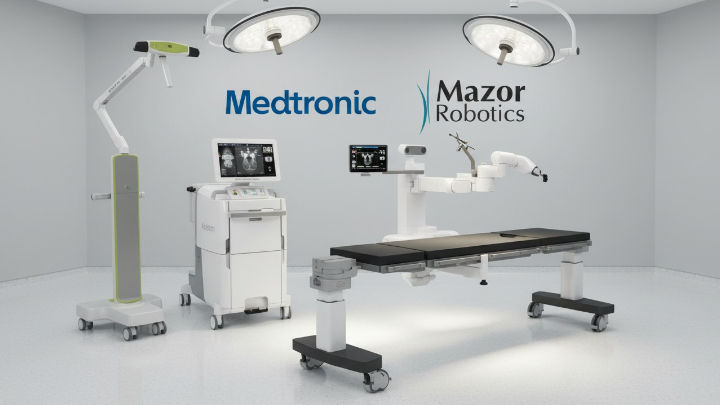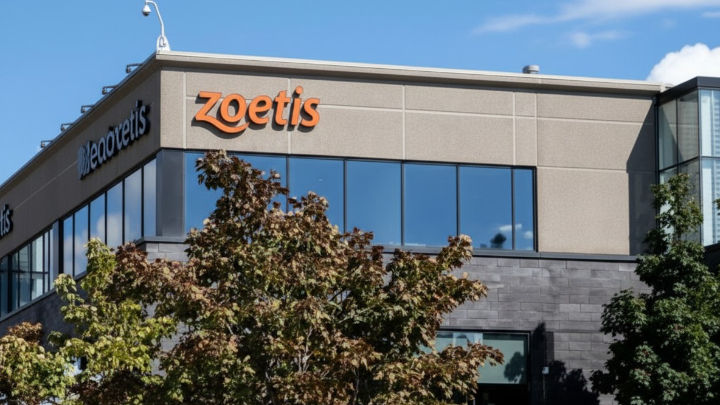Medtronic plc (MDT) Stock: Can This Medical Device Titan Reclaim Its Throne?
- Sep 2
- 6 min read

For over half a century, Medtronic has been a titan of the medical technology industry. Its name is synonymous with life-saving innovation, from the first wearable pacemaker to cutting-edge robotic surgery systems. As the largest pure-play medical device company in the world, its products are fixtures in nearly every hospital, clinic, and operating room on the planet. For investors, Medtronic has long been a bastion of stability—a blue-chip, dividend-paying stalwart that provides foundational exposure to the long-term growth of global healthcare.
However, the last few years have been a period of uncharacteristic struggle for this industry giant. A combination of supply chain disruptions, quality control issues, increased competition, and a slower-than-expected recovery in surgical procedure volumes has weighed heavily on its performance, leaving its stock price stagnant and trailing its peers.
This has created a sharp divide among investors. Is Medtronic a fallen angel, a mature company struggling to keep pace in a rapidly innovating industry? Or is it a deeply undervalued powerhouse on the verge of a turnaround, offering a rare opportunity to buy a best-in-class company at a bargain price? This in-depth analysis will dissect the complex investment case for Medtronic, from its pioneering history to the challenges and opportunities that will define its future.
A Legacy Born in a Garage: The Dawn of Bioengineering
Medtronic's story is the story of the birth of modern medical technology. The company was founded in 1949 by Earl Bakken and his brother-in-law, Palmer Hermundslie, in a small garage in Minneapolis. Their initial business was repairing medical electronics. But their destiny changed forever in the late 1950s when they developed a revolutionary device at the request of a University of Minnesota heart surgeon: the world's first wearable, battery-powered external pacemaker.
This single invention was a paradigm shift, freeing patients from their reliance on large, wall-powered machines and marking the dawn of implantable and wearable medical devices. This breakthrough set the course for the next 75 years of Medtronic's history, establishing a culture of close collaboration with physicians to engineer technological solutions to complex medical problems.
The company grew into a global powerhouse not just through internal innovation, but also through a series of transformative acquisitions that expanded its reach into new therapeutic areas. Key deals include:
Sofamor Danek (1999): Made Medtronic a world leader in spinal surgery.
MiniMed (2001): Provided the foundation for its Diabetes business.
Covidien (2015): A massive $50 billion acquisition that dramatically expanded its portfolio in surgical tools and patient monitoring, creating the diversified MedTech giant we know today.
This history of innovation and strategic M&A demonstrates Medtronic’s long-standing ability to identify and dominate new fields of medical technology, a skill it is relying on to navigate its current challenges.
The Four Pillars of the Medtronic Empire
Medtronic's business is built on a foundation of unparalleled diversification across the medical device landscape. It operates through four major segments, each a multi-billion-dollar business in its own right.

1. The Cardiovascular Portfolio: The Heart of the Business
This is Medtronic’s largest and most foundational segment, a global leader in treating a wide range of heart and vascular conditions. It is the direct descendant of Earl Bakken's original pacemaker.
Cardiac Rhythm Management: Medtronic remains the #1 player in pacemakers and implantable cardioverter-defibrillators (ICDs), including its revolutionary leadless Micra pacemaker, the smallest in the world.
Structural Heart: The company is a key player in the rapidly growing market for transcatheter aortic valve replacement (TAVR) with its Evolut platform, which allows doctors to replace a diseased heart valve without open-heart surgery.
Coronary & Peripheral Vascular: This division provides a vast array of stents, balloons, and other devices used to treat blocked arteries in the heart and throughout the body.

2. The Neuroscience Portfolio: A Leader in Brain and Spine
This segment is focused on treating conditions of the nervous system and is another area where Medtronic holds a clear leadership position.
Spine: Medtronic is the largest company in the massive spine surgery market, offering a comprehensive portfolio of implants, instruments, and robotic navigation systems (Mazor X) for treating spinal disorders.
Neuromodulation: The company is a pioneer in deep brain stimulation (DBS) for treating movement disorders like Parkinson's disease, as well as spinal cord stimulation for chronic pain.
Pelvic Health: This division includes the highly successful InterStim system, which provides sacral neuromodulation to treat bladder and bowel control issues.
3. The Medical Surgical Portfolio: The Tools of the Trade
Largely built through the acquisition of Covidien, this segment provides the essential tools and technologies used in operating rooms and patient care settings worldwide. This includes everything from advanced surgical staplers and vessel sealing instruments (LigaSure) to ventilators and patient monitoring equipment (pulse oximeters, capnographs). This business provides incredible scale and a recurring revenue stream from disposable products.
4. The Diabetes Portfolio: A Business in Turnaround
This has been Medtronic’s most challenged segment. While a pioneer in insulin pumps, the company has lost significant ground to more nimble competitors like Dexcom and Insulet, who have led the market with more advanced continuous glucose monitoring (CGM) sensors and patch pumps.
However, Medtronic is in the midst of a major product cycle refresh aimed at regaining its competitive footing. The recent launch of its MiniMed 780G insulin pump system with the new Guardian 4 CGM sensor has been a critical step forward. This "automated insulin delivery" system is designed to act like an artificial pancreas, automatically adjusting insulin delivery based on real-time glucose readings. The success of this new platform is crucial for the turnaround of the Diabetes business.
Financials: The Dividend Aristocrat and the Growth Challenge
For income-focused investors, Medtronic has long been a gold standard. The company is a proud member of the S&P 500 Dividend Aristocrats, an elite group of companies that have increased their dividend for 25 or more consecutive years. Medtronic's streak is now approaching 50 years, placing it in the even more exclusive "Dividend Kings" category.
Reliable Dividend Growth: Medtronic consistently raises its dividend every year, typically in the high single digits, providing a reliable and growing income stream for shareholders.
Strong Cash Flow: The company's diversified and essential product portfolio generates strong and stable free cash flow, which comfortably funds the dividend, R&D, and strategic acquisitions.
However, the company's top-line growth has been a persistent challenge. While the business is stable, it has struggled to generate the consistent mid-single-digit growth that investors expect from a market leader. This sluggish growth, combined with the operational and supply chain issues of the past few years, is the primary reason for the stock's underperformance. The core of the investment debate is whether the company's new product pipeline can re-accelerate growth to a more acceptable level.
Fundamental Data
Go beyond the stock price with this deep dive into a company's core fundamentals.
🔖 Key Takeaways
The decision to invest in Medtronic is a bet on a classic turnaround story. It is an investment in a discounted, blue-chip market leader that has the potential to regain its footing and reward patient investors.
For the Value and Income Investor: Medtronic is an incredibly compelling opportunity. You get to buy a world-class company with a wide economic moat and an elite dividend track record at a valuation that is well below its long-term average. The thesis is that the company's current operational issues are temporary and that the market has overly punished the stock. For this investor, the generous dividend provides a substantial income stream while waiting for the turnaround to take hold.
For the Growth-Focused Investor: This is a more challenging case. Medtronic is not a high-growth company. The bull case for a growth investor is that the company's new product pipeline (in areas like renal denervation, surgical robotics, and diabetes) can successfully re-accelerate top-line growth to the mid-single digits. This requires patience and a belief that the recent period of sluggishness is an anomaly, not the new normal.
Medtronic is a titan of industry that has stumbled but is far from broken. The company's unparalleled scale, diversification, and commitment to innovation provide a powerful foundation for a recovery. While the risks of competition and execution are real, the current discounted valuation and the rock-solid dividend offer a significant margin of safety. For patient, long-term investors, Medtronic represents a chance to buy a high-quality business at a low point in its cycle.
This was the Medtronic (MDT) Stock: Can This Medical Device Titan Reclaim Its Throne? Want to know which healthcare stocks are part of the S&P 500? Click here.







Four years ago, my husband was diagnosed with IPF (Idiopathic Pulmonary Fibrosis), a moment that changed our lives significantly. For more than two years, he followed his prescribed medications and attended regular medical checkups. Despite this, his symptoms persisted, and we remained concerned about his overall health. He struggled with low energy, frequent discomfort, and the emotional stress that came with ongoing uncertainty.In search of additional support, we decided last year to explore a herbal treatment program offered by NaturePath Herbal Clinic. We approached it cautiously and without high expectations. Over time, however, we began to notice encouraging changes. His tiredness eased, his digestion became more stable, and he appeared stronger and more at ease overall. Little by little, his…